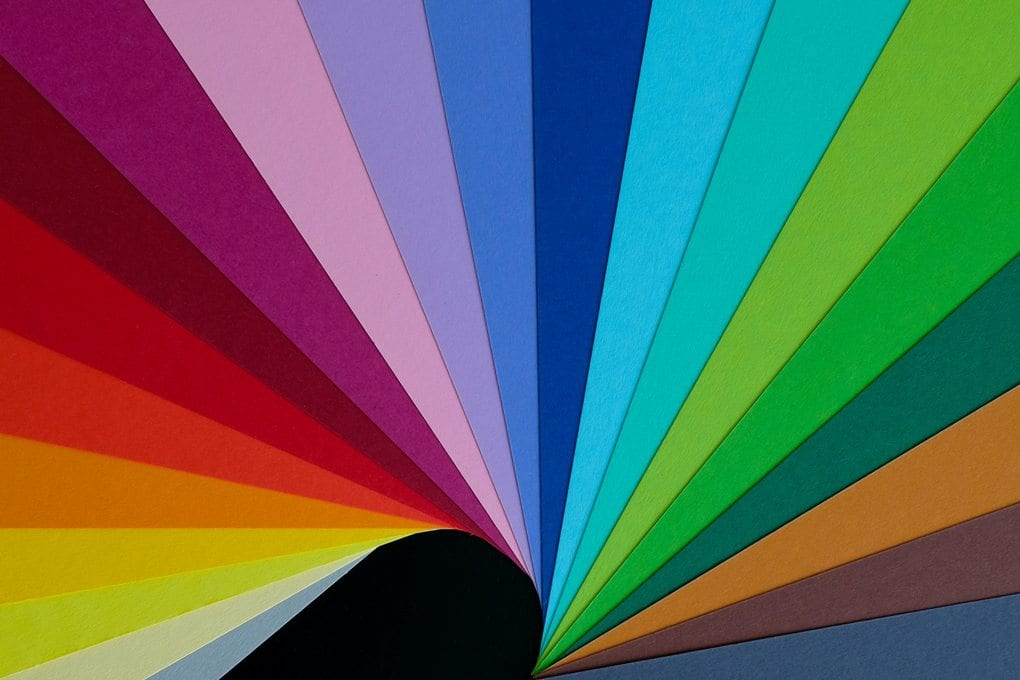Graphic designers are a key part of everyday life. Graphic designers create visual communications that are seen every minute of every day across the world. Designers create and develop entertainment graphics, advertising items, news, and features in all forms, including print like magazines and brochures.
Graphic designers also create digital and broadcast media for television, web browsers, social media platforms, and portable devices like a Nintendo Switch or an iPhone. As the world of technology continues to develop and grow more complex, so so the tasks and jobs for graphic designers.
Graphic Design Career Basics

A graphic designer’s job is to inspire and give informative ideas in advertisements and marketing communication materials. Depending on the field, print and digital designers use complex tools to design text, images, colors, and even animations.
There are many different places that a graphic designer can call home. A graphic designer can work for a specific marketing or design firm where they will be a part of a collaborative team. They can also choose to be self-employed and operate independently by working with their own clients.
Graphic designers who decide on the self-employed route must be flexible, as they will need to work around their clients’ schedules, who will sometimes need to meet during evening or weekend hours. As with most other industries, customer service is the key to success as a graphic designer. Along with strong and positive customer service, it is important to know how to bid on contracts, learn how to market design services, and develop a steady client base.
Another characteristic that is imperative to the success of a graphic designer is their communication skills. In contrast to other “art” jobs, graphic designers don’t just create for creation’s sake, they need to get across a specific message through their designs into the real world.
While having an artistic ability is necessary, they must also have the means to incorporate a call to action through their art or designing brand. Graphic designers will have to integrate communication design along with graphic design to be successful in the industry.
Typically, graphic designers will work on a computer, but they will need to make sure that their designs are ready for various viewing platforms for both printing or publishing. Additionally, graphic designers can specialize in a specific area of design, but typically, they will want to be well-rounded in order to work with a variety of clients. Some specialties can include logo design, typography, branding and advertising, e-mail blasts and newsletters, and product packaging.
Steps to Become a Graphic Designer

Start early
When deciding to become a graphic designer, there are a few steps to obtain success. As with many fields, it never hurts to begin early in these efforts. In the field of graphic design, it is a great idea to start in high school.
Students with a passion for design should look into taking art classes such as art history, drawing, and if offered, classes like graphic arts and website design. Some clubs or organizations to get involved with are designing and producing the school newspaper or the school yearbook. Being a graphic designer requires a good eye and a creative mind, but the development of practical skills is also key to success.
Earn a degree
The next step is earning a degree in graphic design. Most employers are looking for graphic designers who have a complete education that comes from attending an accredited college. Designers are more likely to find a quality graphic design position by earning a bachelor’s degree over an associate degree.
Over 300 institutions in the United States offer degree programs accredited by the National Association of Schools of Art and Design. There are many school options for a designer, including small private colleges, prestigious art institutes, and large public universities.
Students who wish to pursue a bachelor’s degree have a few options, including earning a bachelor of arts or a bachelor of science. Another option is earning a Bachelor of Fine Arts in Graphic Arts. These degrees usually are 120 to 180 credits and will take four years to complete. A few upper-level course examples can include production for digital and print environments, media management in digital design, graphic designer as an entrepreneur, and portfolio development.
There are also a growing number of programs that offer online classes. Classes offered in graphic design programs include courses like studio art, commercial graphics, web design, and computer technology. Courses in marketing are typically part of the curriculum since designers must be able to market themselves and know these techniques while designing.
Additionally, not every college program will require their students to complete an internship, but some will. Regardless of whether it is necessary for the program or not, students who completed an internship as a graphic designer gain more experience, establish professional relationships and build their portfolios.
This gives an added advantage compared to a student who does not complete an internship. Another advantage of earning a degree in graphic design is the ability to change career paths. With a degree, students can also pursue careers as web developers, multimedia artists, or industrial designers and drafters, to name a few.
Build a portfolio
A big step in becoming a graphic designer is to create a solid resume and portfolio. Like other candidates, graphic designers require a resume, but unlike other candidates, graphic designers must also have a portfolio. The only way for an employer to understand the prospective designer’s abilities is by seeing their work range as a designer.
Professional portfolios consist not only of print ads and advertisements, but they include online advertisements, website graphics, television commercial reels if created, and animation demos if needed. For many students who are just beginning their careers, presenting an extensive and filled portfolio can be difficult.
In this case, they should focus on quality instead of quantity for their examples. Presenting their best design samples is ideal in order to meet a prospective employer’s specific needs. However, students who have earned their bachelor’s degree will get a head start creating their portfolio as frequently this will be a class and requirement for graduation their senior year.
Stay up-to-date on trends
Keeping up on the trends and current changes in the graphic design field is necessary for every designer. Graphic design is continually changing and developing, and designers must be able to keep up with the trends in design as well as the trends with specialized graphic design software programs. Organizations like the American Institute of Graphic Arts or the Graphic Artists Guild provide their members with updates on new technology, software, and methodology.
Graphic designers must be able to continuously evolve with the changing market. Returning to school or taking classes is common with graphic designers. These designers choose to advance their skills creatively and thorough knowledge of the field. They may take a graduate degree or take a post-secondary certificate.
Tools of the trade

Designers will use a variety of design tools to do work for clients or the art world. A designer’s tools can vary on what they are designing and which output will be used.
Print designers may use Adobe Framemaker, Adobe InDesign, and QuarkXPress. In contrast, digital designers might work in Adobe Illustrator, CorelDraw Graphics Suite, or Adobe Fireworks. Designers who use motion graphics will work in Adobe After Effects or Autodesk Maya.
How much do graphic designers make?

Of course, as with all industries, a designer’s salary will vary upon the geographical location, type of employer, education, and years of experience. According to the Bureau of Labor Statistics, a graphic designer’s median salary is $52,110 per year.
Additionally, the field can expect job growth of three percent to 2028. While this is much slower than many other occupations, designers employed in computer systems design and related services are expected to grow by twenty-four percent due to companies wanting to increase their digital presence and need designers to create visually appealing website layouts.
Why become a graphic designer?

- Graphic designers are in demand. Digital media isn’t going anywhere, which means that graphic designers aren’t either. While the industry might be competitive, there will always be room for a designer with the right eye and work ethic.
- Those who choose graphic design are not stuck in one specific occupation. The beauty of graphic design is that it can be flexible and applicable to many different careers. Those who earn a bachelor’s in graphic design don’t immediately have to translate that into a career as a graphic designer. There are plenty of other jobs that students can choose other than a graphic designer.
- Every day is different. Those who wish to work in a role where no two days are alike might find a graphic designer position extremely satisfying. Each day designers might be working on a different project and a different design, which means that they will continually be doing something different and exciting.
About us: Career Karma is a platform designed to help job seekers find, research, and connect with job training programs to advance their careers. Learn about the CK publication.



